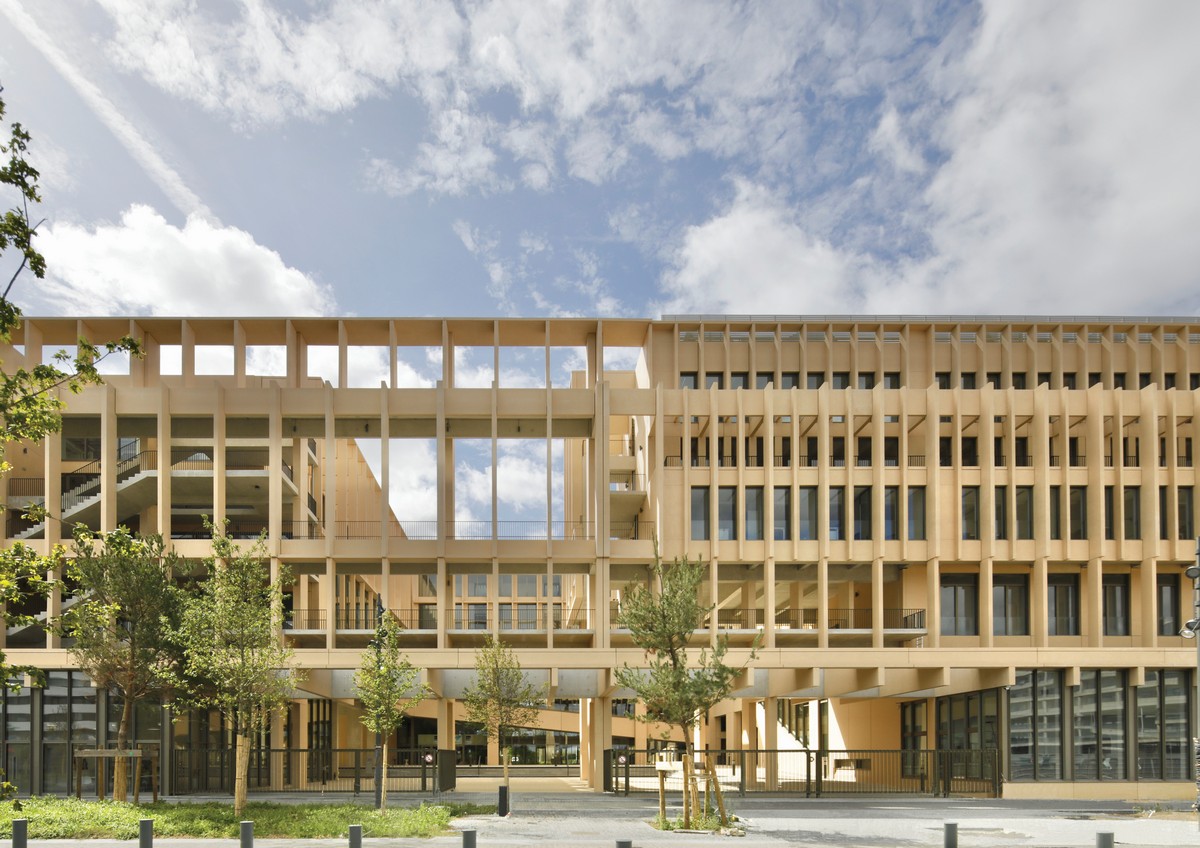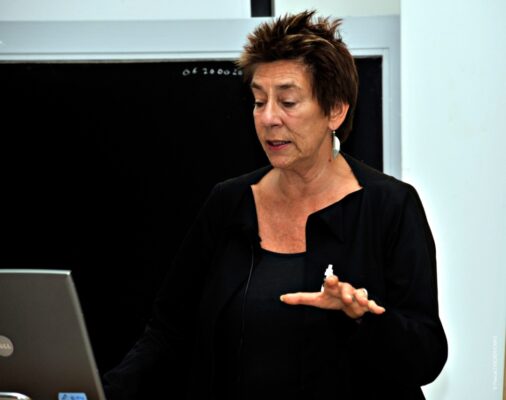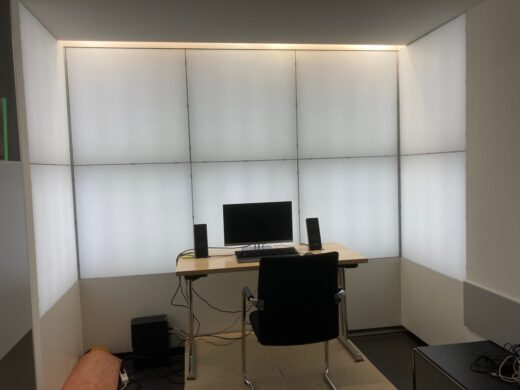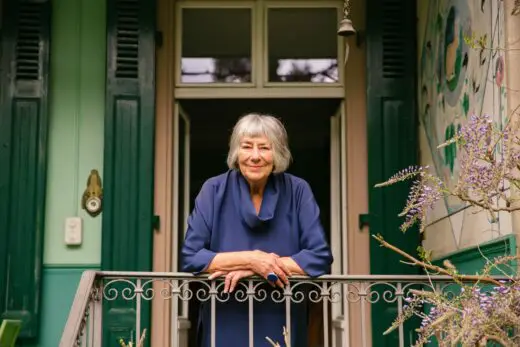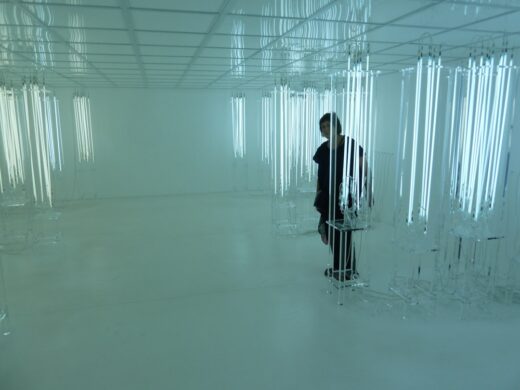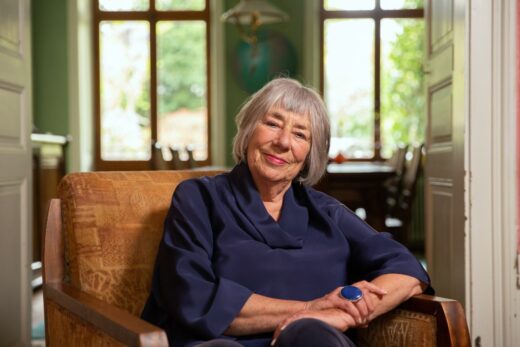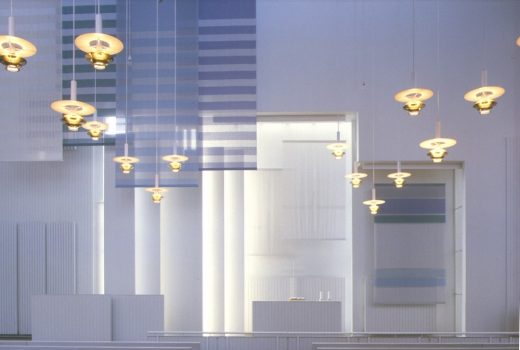Daylight Award 2022 Winners, Building Contest, Dual Prize News, Research Design Images
Daylight Award 2022 Prize
Research Architecture Competition Winners: Information incl jury & laureates
17 May 2022
Institut Mines-Télécom, Paris-Saclay building design by Grafton Architects:

photo © Philippe Ruault
Daylight Award 2022 Winners
Yvonne Farrell and Shelley McNamara from Grafton Architects, and Anna Wirz-Justice receive The Daylight Award 2022
Copenhagen, 16 May 2022. On the UNESCO International Day of Light, The Daylight Award announces the 2022 Laureates: Yvonne Farrell and Shelley McNamara for their architecture, and Anna Wirz-Justice for her research.
University Campus UTEC Lima design by Grafton Architects:
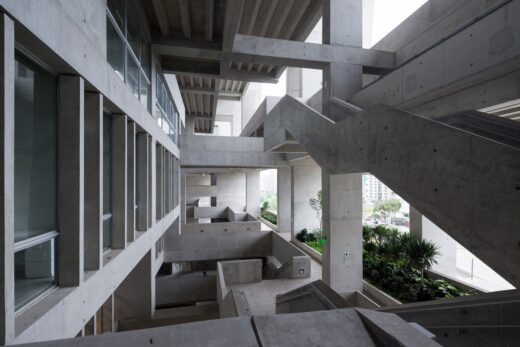
photograph © Iwan Baan
“The laureates exemplify common themes. Not only do they represent international excellence in daylight research and practice, but they also embody a generous and humanistic spirit regarding the celebration of daylight. The contribution of daylight to enhance quality of life – even to celebrate life – is an intrinsic quality of their work. It is remarkable how they have applied this humanistic approach with a depth of knowledge and breadth of intentions that belies their humble and detached vision of theirworks’ importance” – states the jury.
Institut Mines-Télécom, Paris-Saclay design by Grafton Architects:
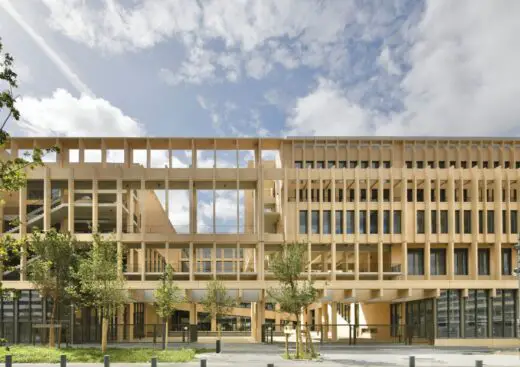
photo © Philippe Ruault
The Daylight Award for Architecture: Yvonne Farrell and Shelley McNamara, Grafton Architects
Grafton Architects have mastered the use of daylight throughout their wide and exceptionally varied design production. They use natural light to differentiate and articulate spaces of different importance, functional purpose and experiential atmosphere. Daylight is employed in their design process as an integrated and irreplaceable quality, along with the spatial arrangement, structural frame and technical systems.
Yvonne Farrell (left) ; Shelley McNamara (right), of Grafton Architects:
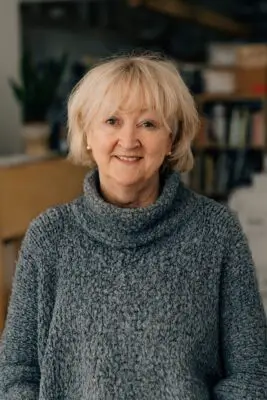
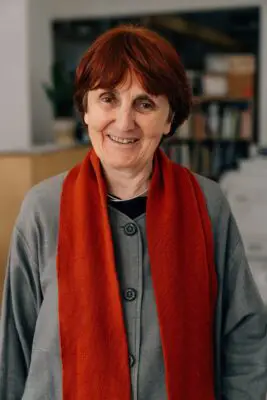
photos © The Daylight Award
Their skill to direct daylight both vertically and horizontally into often thick and layered building volumes is remarkable. Natural illumination heightens the working conditions and sensory qualities of the spaces, instead of being merely an element of composition or aestheticization. Daylight emphasizes and celebrates the main spaces in their buildings. Natural light in Grafton Architects’ projects has a relaxed, generous, and calm presence.
Universita Luigi Bocconi Milan building designed by Grafton Architects:
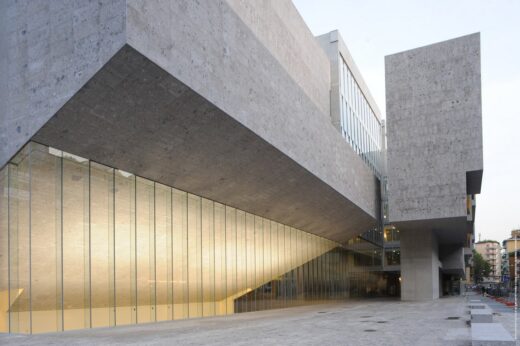
photograph © Iwan Baan
“We think it is wonderful that there is an award related to daylight. This award reminds us that light is one of the key materials in architecture. What is amazing about natural light is that is so varying across the world. And it is kind of amazing because you learn each time” – says Shelley McNamara.
Institut Mines-Télécom, Paris-Saclay by Grafton Architects:
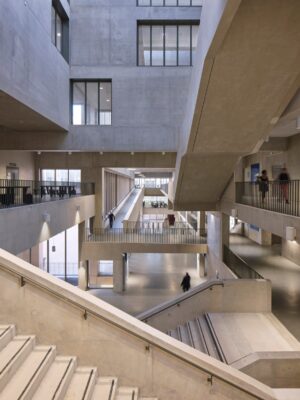
photo © Dennis Gilbert
Daylight is evident as an inseparable aspect of Graftons’ designs
Universita Luigi Bocconi Milan by Grafton Architects:
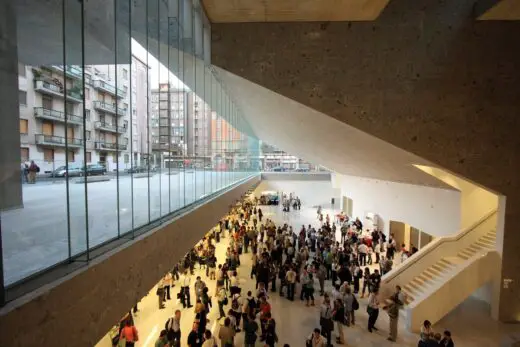
photo © Iwan Baan
Yvonne Farrell and Shelley McNamara do not always explicitly describe their approach and concept of daylight in their designs. However, the projects speak for themselves, and are explicit and representative of Grafton Architects’ attention to the constant integration of daylight in their projects and its specific role. Daylight is evident as an inseparable aspect of their designs. This is most clearly revealed in the sections of their buildings.
Kingston University London – colour atrium section:
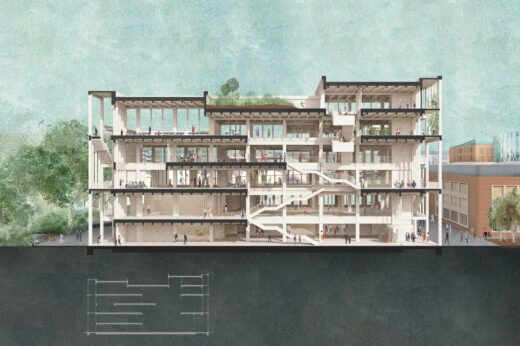
picture © Grafton Architects
“We describe our architecture as physics of space, physics of culture. What we really try to do is capture the environmental conditions of location, for people to enjoy it. It is a cultural relationship. Our relationship with light starts with looking at the angle of the sun, one of the aspects that we look at very deeply. As we move to the future times of sustainability, we should be aware that light is an extraordinary energy, it is not just a visual delight” – adds Yvonne Farrell.
University Campus UTEC Lima building design by Grafton Architects:
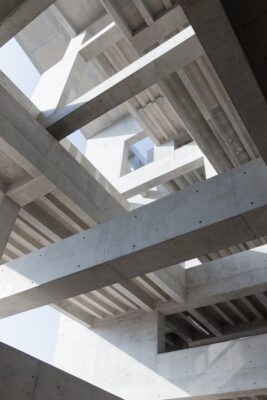
photograph © Iwan Baan
In Grafton Architects’ buildings, the use of daylight creates beautiful contrasts, and illuminates the core of their projects. Daylight produces a comfortable and warm atmosphere in service of the users. The daylight does not create monumentality – and it is not a religious or scenographic light – It is a beautiful, soft, and humanistic light, perfectly merged with the architecture. This is a light that integrates and creates a unique spatial experience without being demonstrative or imposing.
Kingston University London – courtyard section:
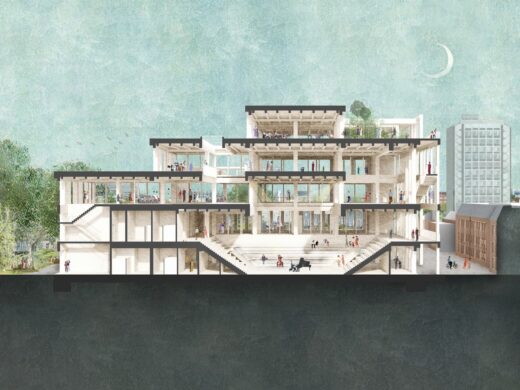
picture © Grafton Architects
Consistently, in all their projects, Grafton Architects’ virtuosity and remarkable use of daylight enables them to conceive thick, deep buildings, and to bring the light where it is wanted, necessary and comfortable: to work, to read, to stay. It allows them to create a complex and rich interior architecture, spatially dense, which nevertheless achieves a human scale and intimate environments within tall and large buildings. In some works, surfaces are used as daylight reflectors and modulators. Glazed ceramic floor, combined with rough brick walls, silky dark wood, together with carefully placed openings, create rich and intricate spatial experiences.
University Campus UTEC Lima building section:
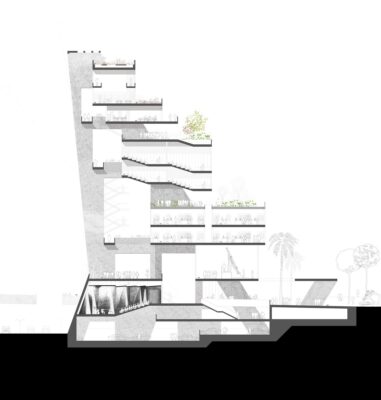
picture © Grafton Architects
It is clear that daylight is particularly important in Grafton Architects’ architecture. It is not an accessory. It is a major constituent element of the architecture. Grafton Architects show a skillful and delicate mastery of daylight, which fully serves an architecture of use for the people who inhabit the spaces and enhances the life of the community.
The Daylight Award for Research: Anna Wirz-Justice
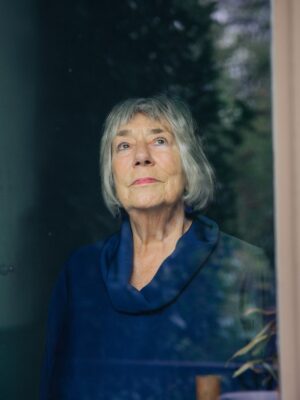
photograph © The Daylight Award
Anna Wirz-Justice has undertaken pioneering research on how human circadian rhythms and sleep are regulated by light. Defining the key parameters of how light acts as a biological stimulus, including the importance of when we see light, how long we see it, and of what intensity and colour spectrum.
“The Daylight Award for Daylight Research is a great surprise and a great honour, for which I am extremely grateful, since it highlights our field of chronobiology, and the growing knowledge of how crucial daylight is for our health and wellbeing. I have had the fortune to live and work in an extraordinary era where the science of biological rhythms came of age” – says Anna Wirz-Justice the occasion of receiving the award.
Working in a psychiatric clinic, Anna appreciated the connections between abnormal light exposure, circadian rhythm disruption, and the impact this has on mental health. She introduced the use of light therapy to Europe and studied its use in Seasonal Affective Disorder (SAD), non-seasonal depression, Borderline Personality Disorder and dementia. This work allowed Anna, and other groups around the world, to establish both the scientific and therapeutic application of light as a treatment for different areas of mental illness. This holistic approach led Anna and colleagues to write a manual for health care professionals, thereby guiding evidence-based light treatment to improve mood and sleep disorders.
Research on light’s widespread effects on humans has changed architecture in the last decade
Anna Wirz-Justice has embedded her science broadly across the public sector. She has, and continues to reach out to numerous other fields in both the natural and humanistic sciences, to convey the importance of the natural day-night cycle on our psyche and physiology, including through architecture and the world of art. She has been the driving force behind multiple public lectures, exhibitions, installations, and architecture projects.
“Research on light’s widespread effects on humans, independent of vision, has changed architecture in the last decade. It has initiated new lighting standards to incorporate non-visual effects of light as necessary for health. It has re-awakened interest in the huge potential of daylight to complement artificial light” – Anna Wirz-Justice emphasizes.
Light is essential for health, regulating many aspects of our physiology, not least our circadian rhythms and sleep/wake cycles. Appropriate light exposure synchronizes the circadian timing system, allowing us to respond optimally to the varied and profound demands of the day/night cycle. Without this daily synchronization, circadian timing systems become misaligned with each other and with the outer world. The consequences of circadian dysregulation include fluctuations in mood, irritability, impulsivity, and reduced concentration, alertness, performance, and creativity. Long-term, there is an increased risk of cardiovascular disease, obesity, Type 2 diabetes, cancer, and mental illness.
selfportrait ARTBasel mirrors:
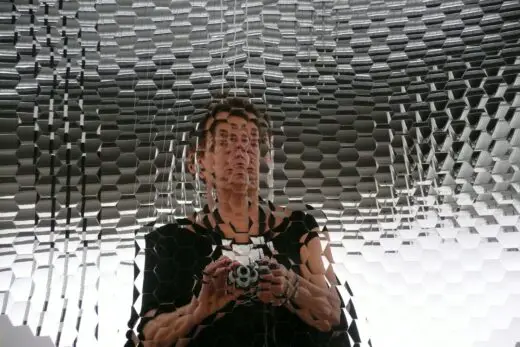
“Recovery from illness can be accelerated by enhanced exposure to daylight. We and many others have collaborated with architects in new hospitals or retirement homes. Schools and workplaces also need enough access to daylight. If young children spend time outside every day, this seems to be a simple strategy to prevent myopia. So, I think we have reached a level of knowledge whereby chronobiologists and architects can talk to each other to improve the quality of the built environment with respect to the health-enhancing effects of daylight” – concludes Anna Wirz-Justice.
About Grafton Architects
Yvonne Farrell and Shelley McNamara Grafton Architects:
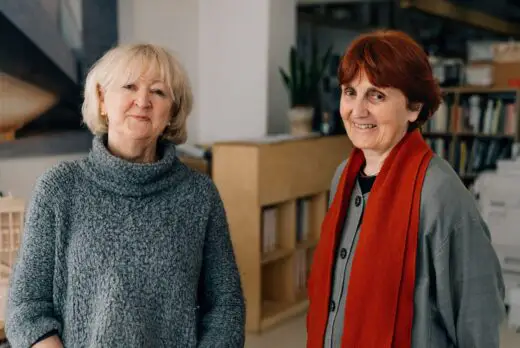
photograph © The Daylight Award
Grafton Architects were founded in 1978 by Yvonne Farrell and Shelley McNamara. They graduated from the School of Architecture at University College Dublin in 1974, where they taught from 1976- 2002 and were appointed as Adjunct Professors in 2015. Their international academic roles have included: Visiting Professors at EPFL Lausanne, the Kenzo Tange Chair at GSD Harvard, the Louis Kahn Chair at Yale, and they are currently Professors at the Accademia di Architettura, Mendrisio, Switzerland.
Yvonne Farrell and Shelley McNamara Grafton Architects:
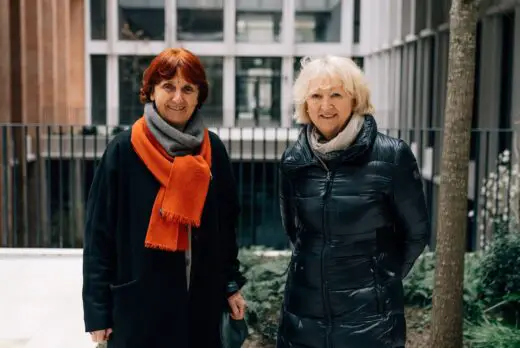
photo © The Daylight Award
They are Fellows of the Royal Institute of the Architects of Ireland (RIAI), International Honorary Fellows of the Royal Institute of British Architects (RIBA) and elected members of Aosdána, the eminent Irish art organization. Grafton Architects have won numerous architectural awards for their work including the RIBA’s International Prize, Stirling Prize and Gold Medal. In 2020, Yvonne and Shelley were selected as the Pritzker Prize Laureates – the highest international honor for architects.
About Anna Wirz-Justice
Anna Wirz-Justice is Emeritus Professor of Psychiatric Neurobiology at the University of Basel, and former Head of the Centre for Chronobiology at the Psychiatric University Clinic in Basel, where she built her distinguished career. Anna has published over 450 research papers and review articles, a main focus being on light therapy for winter depression and sleep disorders.
Anna was born in New Zealand, where she undertook her BSc and MSc, before moving to London for her PhD, with research fellowships in Paris and at NIMH in Bethesda MD, USA. She has remained very actively engaged in many scientific boards and societies, including as Chair of the Chrono History Committee of the Society for Research on Biological Rhythms, as Board Member of the Centre for Environmental Therapeutics and as co-founder and former Steering Committee member of the Daylight Academy.
The 2022 jury
This year’s laureates were selected and appointed by the distinguished jury:
Anne Lacaton, Principal of Lacaton & Vassal Architectes, Paris, laureate of The Daylight Award in 2011, winner of the EU Mies Award 2019 and The 2021 Pritzker Prize Laureate, associate Professor of Architecture & Design at ETH Zurich.
Dorte Mandrup, founder of Dorte Mandrup A/S, Copenhagen, chair of the Mies van der Rohe Award 2019, Adjunct Professor at The Royal Danish Academy of Fine Arts and holds frequent visiting professorships abroad.
Marilyne Andersen, Professor of Sustainable Construction Technologies at École Polytechnique Fédérale de Lausanne, and laureate of The Daylight Award in 2016 Gerd Folkers, Professor for Pharmaceutical Chemistry since at the ETH Zurich. He previously served at the Swiss National Science Foundation and has been director of the Collegium Helveticum since 2012.
Russell Foster, Director of the Nuffield Laboratory of Ophthalmology and Head of the Sleep and Circadian Neuroscience Institute at the University of Oxford. In 2020, Russell Foster was awarded The Daylight Award for Research.
Juhani Pallasmaa, Finnish architect, writer, teacher and practicing architect. From 2009-2014 he served on the jury for the Pritzker Architecture Prize.
Koen Steemers, Professor of Sustainable Design, The Martin Centre for Architectural and Urban Studies, Department of Architecture, University of Cambridge, United Kingdom
About The Daylight Award
The Daylight Award is established by the philanthropic foundations VILLUM FONDEN, VELUX FONDEN and VELUX STIFTUNG, and is conferred biennially in two categories: The Daylight Award for Research and The Daylight Award for Architecture. The award is given as personal prizes, and each to the sum of €100,000.
Find out more at www.thedaylightaward.com
Daylight Award 2022 images / information received 160522
Previously on e-architect:
18 May 2020
Daylight Award 2020 Laureates
Daylight Award 2020 Laureates:
• Juha Leiviskä, Finland, The Daylight Award 2020 For Architecture
• Russell Foster, United Kingdom, The Daylight Award For Research
• Henry Plummer, United States, The Daylight Award For Lifetime Achievement
Buildings by Juha Leiviskä
Myyrmäki Church, in Vantaa (near Helsinki), 1980-84:

Russell Foster
Photos by Henry Plummer
All photographs by Henry Plummer:
Männistö Church, Kuopio, Finland by Juha Leiviskä:
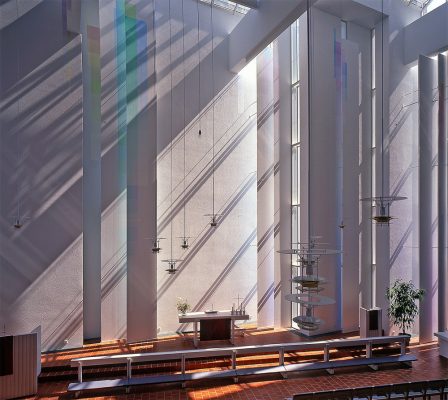
Chapel of Notre Dame du Haut, Ronchamp, France by Le Corbusier:
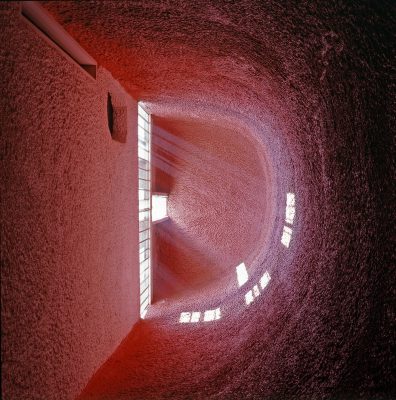
Thermal Baths, Vals, Switzerland by Peter Zumthor:
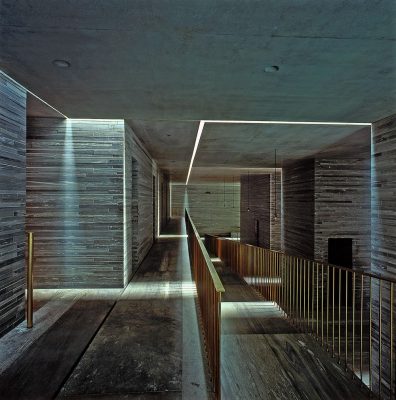
Guerrero House, Zahora, Spain by Alberto Campo Baeza:
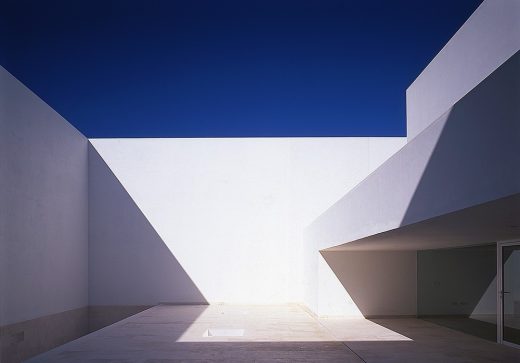
Tuskegee Chapel, Tuskegee University, Tuskegee, Alabama, USA by Paul Rudolph:
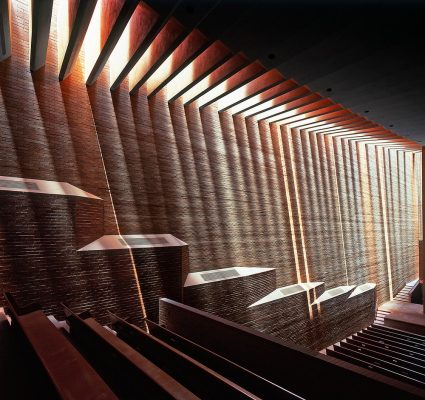
Portrait of Hiroshi Sambuichi, Laureate of The Daylight Award 2018 for Daylight in Architecture:
Film on YouTube
Portrait of Greg Ward, Laureate of The Daylight Award 2018 for Daylight Research:
Film on YouTube
Daylight Spaces Competition
Competition “Daylight Spaces” raises awareness for the topic daylight – Nagashima interior:
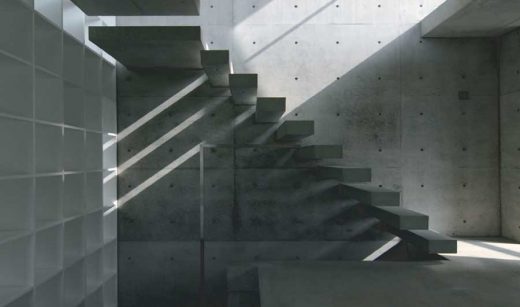
photo : Nagashima and Partner, Architects, Yokohama
Daylight Spaces Competition
City Pool and Turkish Baths
Design: Napper Architects
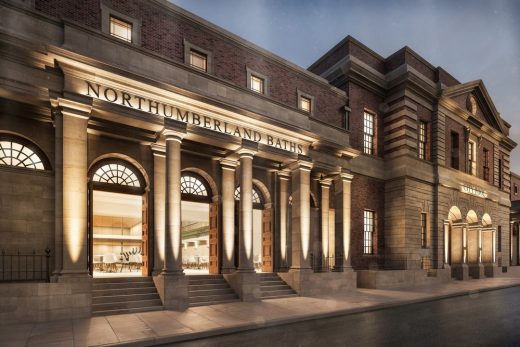
image from architects
City Pool and Turkish Baths in Newcastle
Architecture Competitions – Selection from early 2010
Public Design Festival – duepercinque contest, Milan
duepercinque contest
Atlantic City Boardwalk Holocaust Memorial Inc. Contest, New Jersey, USA
Atlantic City Boardwalk Holocaust Memorial Competition
Music Studio Design Competition, Haiti
Music Studio Design Competition : Wyclef Jean’s charity Yéle Haiti
Building Competitions : Archive
Comments / photos for the Daylight Award 2022 page welcome

